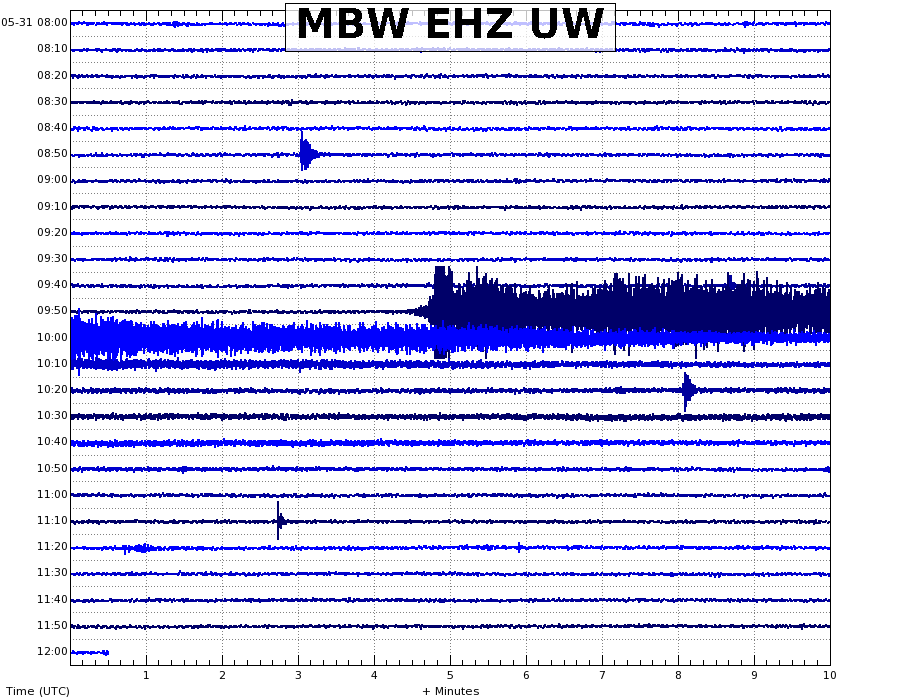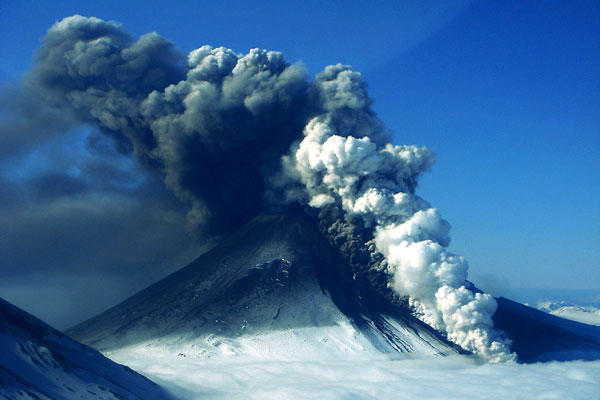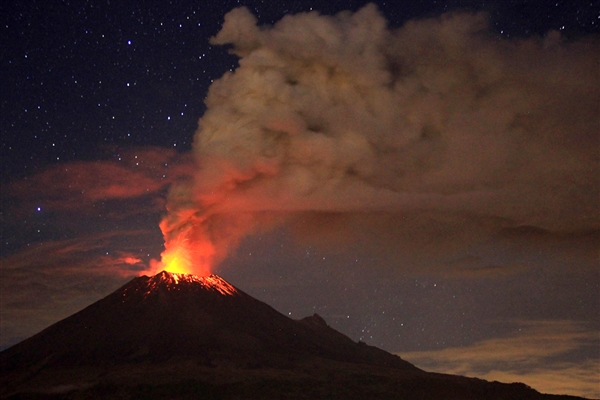It looks like you're using an Ad Blocker.
Please white-list or disable AboveTopSecret.com in your ad-blocking tool.
Thank you.
Some features of ATS will be disabled while you continue to use an ad-blocker.
share:
False alarm--I am a complete dork sometimes.
edit on 5/16/2013 by Olivine because: bad bad info
Okay Volcano fans I have found the coolest site for Volcanos focused on Idaho & Yellowstone. Lots of info, great pics (keep scrolling down & down).
Had to share this with you, just wow.
plate-tectonic.narod.ru...
plate-tectonic.narod.ru...
My mom just informed me Pavlof in the Aleutians is erupting. I just got off work so ill have to look for a credible source
www.google.com...
www.google.com...
edi
t on 20-5-2013 by safetymeeting because: Adding link
reply to post by safetymeeting
Yes it sure is. Thanks for update. So much quicker than news.
www.volcanodiscovery.com...
Yes it sure is. Thanks for update. So much quicker than news.
www.volcanodiscovery.com...
The Smithsonian has changed the format of the SI/USGS weekly report.
Despite being Taurus and hating change on principle I quite like the new site.
Despite being Taurus and hating change on principle I quite like the new site.
update to post by PuterMan
Mm, it looks good but it is a bit broken!
I love the new GVP site look BUT...
Mm, it looks good but it is a bit broken!
I love the new GVP site look BUT...
Chile, Argentina order evacuation around stirring southern volcano
(Reuters) - Chilean and Argentine authorities on Monday declared a red alert and ordered the mandatory evacuation of a 25-km (15.5-mile) radius around the active Copahue volcano, which straddles the border between the two Andean nations.
The volcano - located some 500 km (310 miles) south of capital Santiago, between Chile's Bio Bio region and Argentina's Neuquen province - has seen increasing seismic activity in recent weeks but has not erupted, Chilean authorities said.
"This doesn't necessarily mean the volcano will start erupting. But according to the Sernageomin (National Geological and Mining Service), the volcano is now in a process that could culminate in an eruption, for that reason we've issued a red alert and the evacuation," Chilean Interior Minister Andres Chadwick told a nationally televised news conference.
Source
reply to post by lurksoften
Having just downloaded May data for Chile from SSUCH I went looking for those seismic events ......... nothing!
Looks like the volcanic stuff is kept seperate.
found this on a pdf (translated)
www.sernageomin.cl...
more reports here www.sernageomin.cl...
here's the report from the day it went maniac (underlines mine)
Having just downloaded May data for Chile from SSUCH I went looking for those seismic events ......... nothing!
Looks like the volcanic stuff is kept seperate.
found this on a pdf (translated)
02/06/2013 Seismic Activity 1.1.1: The seismicity recorded during the last 24 hours showed a behavior characterized by a slight increase in the number of recorded earthquakes, however due to the decrease of their amplitudes, the behavior of the RSAM (automatic measurement of seismic energy) showed a trend decreasing. In total there were 1251 (1251) earthquakes, most of them hybrids such low magnitude, with an average of 52 events per hour. Most events showed a mixture of low-frequency (1-3 Hz) at high frequencies (6-10 Hz). His character origin remains surface. It stands earthquake registering a magnitude type VT with maximum ML= 1.6, located 3 km north of the active crater at a depth of less than 1 km.
www.sernageomin.cl...
more reports here www.sernageomin.cl...
edit on 2-6-2013 by muzzy because: (no reason given)
here's the report from the day it went maniac (underlines mine)
27/05/2013 Seismic Activity 1.1.1: The seismicity recorded during the last 24 hours was significantly increased by registering eight thousand five hundred fifty-six (8556) low-magnitude earthquakes with an average of 356 events per hour, with a gap of a few seconds between events (6 -7sec.), resembling a spasmodic tremor. Most events showed a mixture of low-frequency (1-3 Hz) at high frequencies (8-10 Hz), their size, as measured by its amplitude, also increased (by a factor of 2 times on average ). Another important change is that there is a direct relationship with the outgassing activity, since the gas column has decreased and there has been no correlation with explosions as yesterday. The behavior of the RSAM (automatic measurement of seismic energy) shows a rise, but still its slope is gentle, without introducing a point of origin inflexión.Su character remains superficial and possibly related to complex processes associated with the rise of a magmatic body . The maximum magnitude recorded was equal to ML = 1.1. At the time of issuance of this report, the swarm of quakes continues. Not registered continuous tremor signal.
edit on
2-6-2013 by muzzy because: (no reason given)
reply to post by PuterMan
I am a real tightwad, so with your adopt a volcano system for my $5 I would want detailed data like you get (for free) from the Iceland Met Office or the Spanish geographic Institute (El Hierro) about their volcano's and related earthquake events.
Not USGS in this case but, take the 8,556 low-magnitude earthquakes at Copahue (Chile-Argentina), so wheres the data? where, when and how big were they? or is that too many too close together to ID?
If IMO and IGN can do it, why can't SSUH and USGS?
I'd hardly call Iceland and Spain as countries with unlimited funding resources available under the current economic crisis, aren't they both on the verge of collapse?
I am a real tightwad, so with your adopt a volcano system for my $5 I would want detailed data like you get (for free) from the Iceland Met Office or the Spanish geographic Institute (El Hierro) about their volcano's and related earthquake events.
Not USGS in this case but, take the 8,556 low-magnitude earthquakes at Copahue (Chile-Argentina), so wheres the data? where, when and how big were they? or is that too many too close together to ID?
If IMO and IGN can do it, why can't SSUH and USGS?
I'd hardly call Iceland and Spain as countries with unlimited funding resources available under the current economic crisis, aren't they both on the verge of collapse?
edit on 2-6-2013 by muzzy because: (no reason given)
This is interesting. The Mount Baker Volcano Research Center in northern Washington state finds that a large debris flow travelled down the Middle
Fork Nootsack River on 31 May 2013.
Here is the main article posted on the 5th of June and an update posted on the 7th, because the event had originally been characterized as a glacial outburst flood, or jokulhlaup.
Thankfully, this occurred overnight, when dayhikers were not around.
Here is a link to one of the seismograms, recording the 12-13 minute event, courtesy of the PNSN Seismo Blog:

What is scary, is that this event that moved huge boulders 15 feet above the river channel, wasn't detected for days.
IMO, this is another lung-emptying shout for more monitoring equipment, and funds to pay personel to watch the seismic data, at America's active volcanoes.
Here is the main article posted on the 5th of June and an update posted on the 7th, because the event had originally been characterized as a glacial outburst flood, or jokulhlaup.
Thankfully, this occurred overnight, when dayhikers were not around.
Here is a link to one of the seismograms, recording the 12-13 minute event, courtesy of the PNSN Seismo Blog:

What is scary, is that this event that moved huge boulders 15 feet above the river channel, wasn't detected for days.
IMO, this is another lung-emptying shout for more monitoring equipment, and funds to pay personel to watch the seismic data, at America's active volcanoes.
edit on 6/8/2013 by Olivine because: (no reason given)
A third Alaskan volcano has received an elevated alert status--Veniaminof Yellow
Alert.
Here is the link to the current webicorder: AV. VNHG.EHZ
Seismic tremor continues at Veniaminof. Clear web camera views showed a steam plume over the past 24 hours, though it is difficult to see in daytime views. We have received no other reports of activity.
Here is the link to the current webicorder: AV. VNHG.EHZ
The AVO has raised the alert status on Veniaminof volcano to Orange, due to a likely
eruption at the intracaldera cone, as determined from satellite observation of elevated surface temperatures.
Here is a link to the past 24 hours on the webicorder:
Here is a link to the past 24 hours on the webicorder:
Stronger eruptions at two Alaska volcanoes, scientists say
(CNN) -- Two Alaskan volcanoes that began minor eruptions weeks ago are showing their strongest seismic activity yet, emitting small amounts of lava and ash along with smoke plumes, the Alaska Volcano Observatory said Tuesday.
The observatory warned of more vigorous activity with the Pavlof and Veniaminof volcanoes, both on the Alaskan Peninsula -- though that will likely just mean more ash.
Pavlof, a snow-covered, cone-shaped mountain, has been erupting since early May. While its activity since then has waxed and waned, seismic activity increased since Tuesday morning and the volcano has started continuously shaking, said David Schneider, a geophysicist with the U.S. Geological Survey.
Some lava is flowing, and the volcano is spewing a cloud of steam and ash that has risen as high as 28,000 feet, said Schneider, at the observatory in Anchorage
CNN

reply to post by lurksoften
Source
Source
Alaska Volcano Eruptions Get Worse: `We Can’t Explain’ Says Geologist
Alaska volcano eruptions are entering a more powerful phase. After six weeks of Alaska volcano eruptions reaching five miles into the sky, covering nearby communities with ash and shutting down air flights, there looks to be no end.
Alaska volcano eruptions 2013 started in May at the Pavlof Volcano, which is located about 590 miles southwest of the major city Anchorage, in the Alaska Peninsula. The most powerful phase of Alaska volcano eruptions started with low-level rumblings.
According to scientists at the federal-state Alaska Volcano Observatory, the latest phase of Alaska volcano eruptions started late on Monday and continued through the night into Tuesday. The blasts emanate from the crater of a 8,261 foot volcano.
Tina Neal, an geologist at the observatory said, "For some reason we can't explain, it picked up in intensity and vigor."
Source
June 28, 2013 – MEXICO - Seismic activity has picked up, suggesting that the volcano could be headed for more vigorous activity soon. SO2 emissions on NOAA recent satellite data have been relatively high as well. A magnitude 3.6 volcanic quake occurred on Tuesday night 23:57 local time and was located SE of the crater at 2 km depth. Over 3 hours of low frequency and short amplitude tremor were recorded. An earthquake swarms occurred yesterday as well and another one seems to have started an hour ago. The rate of small to moderate steam and ash explosions was reported to about 2 per hour during yesterday, with ash plumes reaching up to 1-2 km height above the crater. Ashfall has been reported at Tepetlixpa and Ecatzingo.
Source
Mexico's Popocatepetl volcano grounds US flights
Four U.S. airlines temporarily suspended flights to and from Mexico City on Thursday after a volcano 50 miles from the capital spewed ash, a spokesman for the city's international airport said.
Three to eight flights on American Airlines, U.S. Airways, Delta Air Lines and Alaska Air Group have been postponed so far, Richard Jimenez, a representative for Mexico City's international airport told Reuters.
"The decision not to fly from Mexico City has been made by these airlines, but the airport is in operable conditions," Andres Gomez, another airport representative, said on local television.
No Mexican airlines have halted operations, Gomez said.
Mexico's leading airline AeroMexico suspended flights briefly Thursday morning, but resumed operations less than an hour later.
The volcano Popocatepetl in the central state of Puebla has been more active this year, prompting officials to raise warning levels but have so far ordered no evacuations.
Officials have kept the volcano's risk level on hold at "yellow," the second highest on the four-color spectrum, indicating that there is more activity than usual but no threat of eruption, national emergency services coordinator Luis Felipe said on Twitter.
Source
MEXICO CITY (AP) — At least six U.S. airlines canceled 47 flights into and out of the Mexico City and Toluca airports Thursday after the Popocatepetl volcano spewed ash, steam and glowing rocks, airport officials said.
Mexico City airport spokesman Jorge Gomez said U.S. Airways, Delta, United, American and Alaska Airlines canceled the flights as a precaution. But he said the airport otherwise continues to operate normally and that by Thursday afternoon no ash had reached the area, about 40 miles (70 kilometers) northwest from the volcano.
Gomez said that among the routes affected by the cancelations were flights to Houston, Dallas, Denver, Phoenix, Chicago and Los Angeles.
At nearby Toluca airport, Spirit Airlines canceled flights from Dallas and Fort Lauderdale, said spokesman Alejandro Munoz.
Source

edit on 5-7-2013 by lurksoften because: (no reason given)
Popocatépetl volcano (Mexico): alert level raised
Sunday Jul 07, 2013 16:31 PM | BY: T
SO2 plume from Popocatépetl yesterday (NOAA)
Current seismic recording from Popocatépetl
The intensity of the current eruptive phase remains high. A phase of particularly strong tremor accompanying continuous explosions and ash emissions occurred this morning.
As a consequence of the elevated activity,CENAPRED raised the alert level to Yellow, Phase 3. An exclusion zone of 12 km radius around the volcano is in place.
During the (intermittent) eruptions, an steam and ash plume is rising about 3 km above the crater.
A giant SO2 plume can be seen drifting north from Popocatepétl, which is notorious of its large SO2 output during eruptions.
Source
edit on 8-7-2013 by lurksoften because: (no reason given)
new topics
-
RFK is Trumps health pick
2024 Elections: 2 hours ago -
Thanksgiving 2024
Member Art: 8 hours ago -
The art of being offended
Social Issues and Civil Unrest: 10 hours ago -
FLORIDA Sues Biden-Harris FEMA for Denying Disaster Assistance to Homeowners with TRUMP Signs.
US Political Madness: 11 hours ago
top topics
-
Turns out, they planned to go after P-nut.
US Political Madness: 15 hours ago, 22 flags -
The art of being offended
Social Issues and Civil Unrest: 10 hours ago, 18 flags -
FLORIDA Sues Biden-Harris FEMA for Denying Disaster Assistance to Homeowners with TRUMP Signs.
US Political Madness: 11 hours ago, 13 flags -
Thanksgiving 2024
Member Art: 8 hours ago, 10 flags -
RFK is Trumps health pick
2024 Elections: 2 hours ago, 10 flags
active topics
-
Qatar kicks out HAMAS
Middle East Issues • 19 • : jofafot -
-@TH3WH17ERABB17- -Q- ---TIME TO SHOW THE WORLD--- -Part- --44--
Dissecting Disinformation • 3269 • : RelSciHistItSufi -
RFK is Trumps health pick
2024 Elections • 3 • : putnam6 -
President-Elect DONALD TRUMP's 2nd-Term Administration Takes Shape.
Political Ideology • 190 • : WeMustCare -
Mike Tyson returns 11-15-24
World Sports • 29 • : ByeByeAmericanPie -
WATCH LIVE: US Congress hearing on UFOs, unidentified anomalous phenomena
Aliens and UFOs • 54 • : putnam6 -
Comcast dumping MSNBC
Mainstream News • 26 • : WeMustCare -
President-elect TRUMP Picks MATT GAETZ for his ATTORNEY GENERAL - High Level PANIC Ensues.
2024 Elections • 71 • : WeMustCare -
Kamala Harris tells Oprah she will kill an intruder
US Political Madness • 43 • : WeMustCare -
Elon's Starlink Stole The Election For Trump--Leftist Conspiracy Theorists Charge
General Conspiracies • 44 • : DdPoolDude
